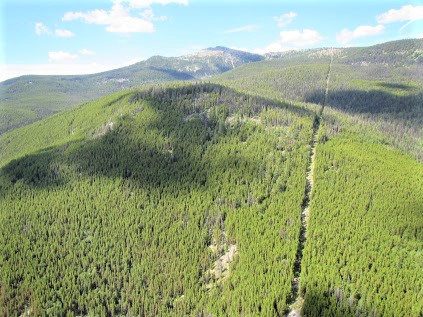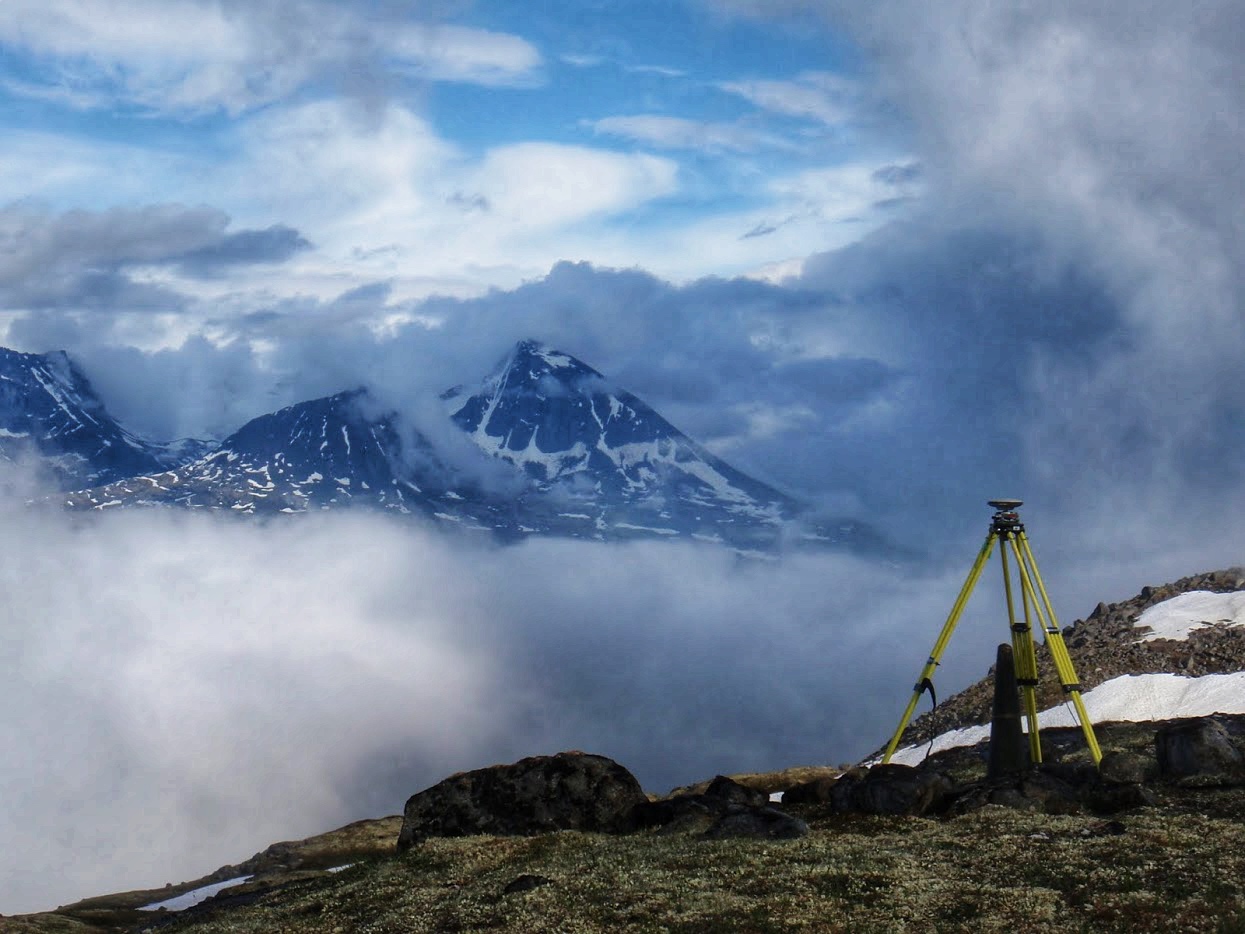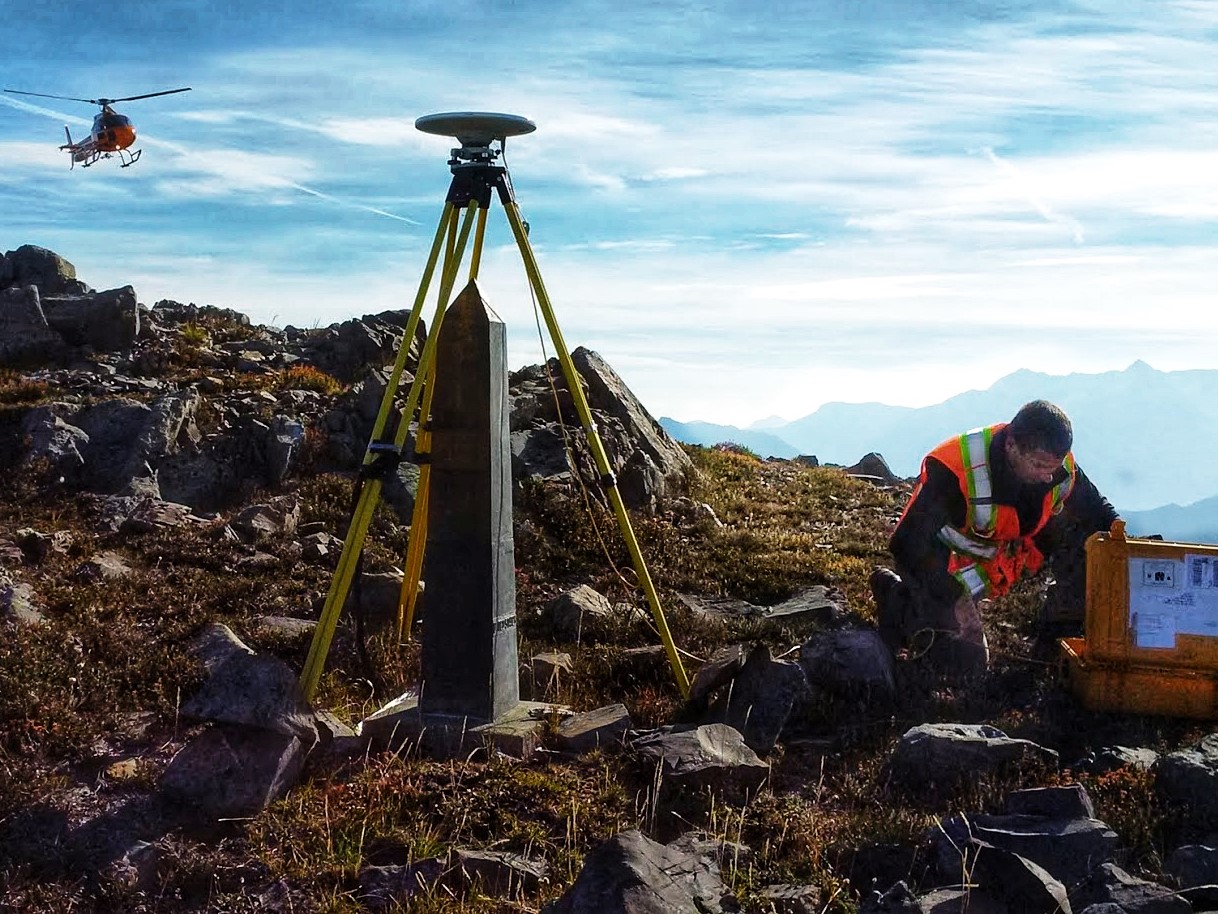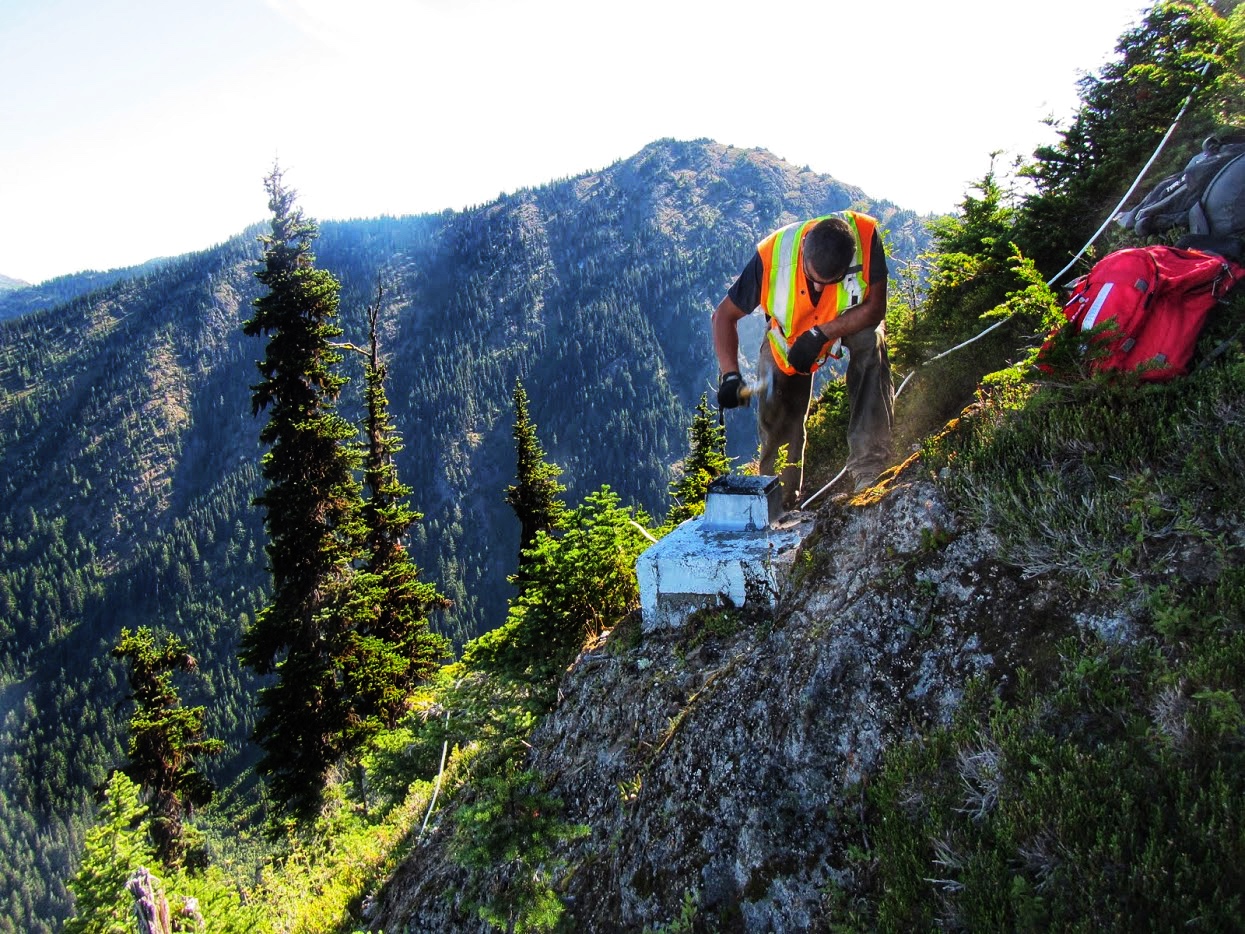As a surveyor for the International Boundary Commission, Joe Harrietha “works the line” in locating and maintaining the vast Canada–United States border. The Canadian section of the Commission is part of Natural Resources Canada, and he’s worked in some of the most remote and scenic areas in Canada for more than 25 years. These photos are from some of his expeditions. Read his personal account of one of these missions here.
Click on an image to view a larger size.
A helicopter brings in new marker materials on the Yukon–Alaska border. What a difference a century makes — in the early 1900s, markers were brought in by horseback.

On the peak of Sturgeon Mountain along the B.C.–Alaska border, Joe surveys a site where a boundary marker was first placed more than 100 years ago.

About every 10 years the Boundary Commission inspects the 6-metre wide straight-line cut along the border through forested areas.



